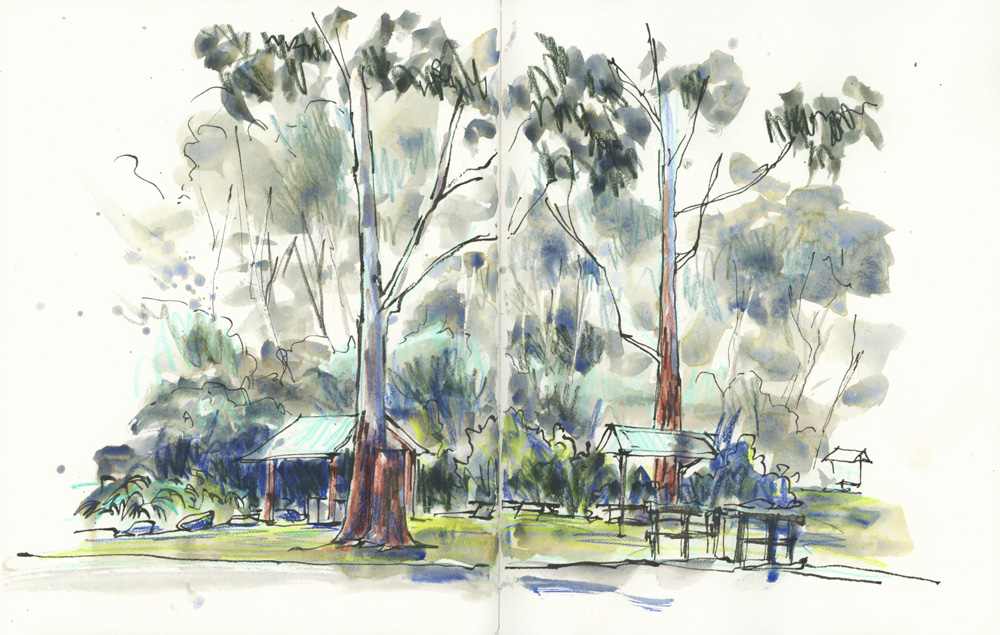
Yesterday I finally got back to Lane Cove National Park for a short sketching session. It’s been over a month since I was last there and I’ve missed it!
And since my last visit one of the trees that I’ve sketched often has been chopped down – it was one half of a twin tree! Or is it a twin-trunked tree?
I’m a little upset as it was a great element to sketch but appreciate the need to make sure that the picnic areas are safe from falling limbs.
This is the first time that I have combined coloured pencils (CPs) with watercolour here (normally my sketches are ink, watercolour pencils and watercolour) and even though I was having fun with different CP hues I was mainly focusing on the characteristics of my watercolour washes. Due to the fact that the CP strokes are normally visible through the washes and also create a degree of ‘resist’ the pigment to water ratio I use and the way I apply my strokes is super important.
This sketch isn’t totally finished because when I was in the last stages of applying watercolour I was attacked by a kookaburra.
This type of thing has happened a few times before but normally I see the bird coming. I know that they think my palette is something edible so they are aiming for my paints. This time I was actually mixing paint when the bird swooped so it clipped my hand. I wasn’t particularly rattled but I didn’t want it to happen again and so finished my sketch early.
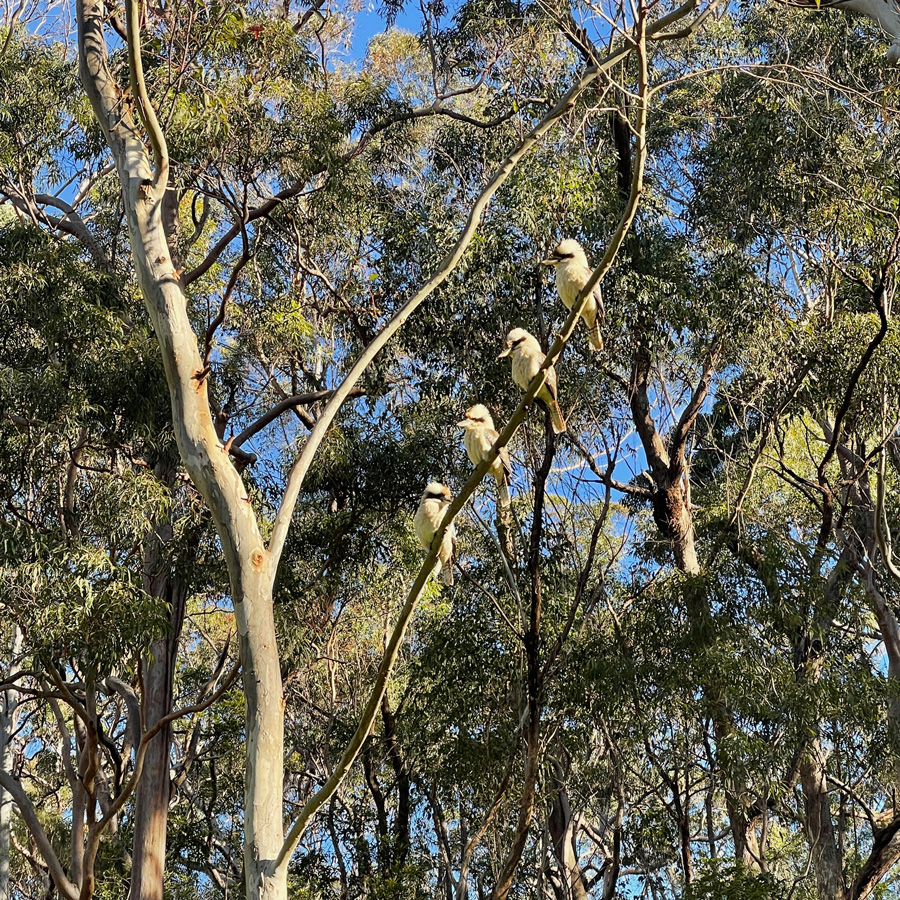
When I stood up to walk back to my car I noticed four kookaburras in a tree watching me! Which one did the deed?
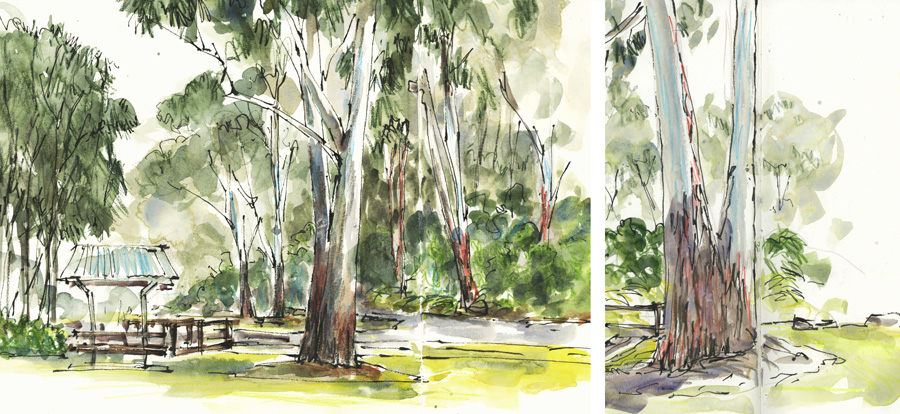
Before I talk more about my washes… here are two sketches showing the two trunks. These are now historic documents!
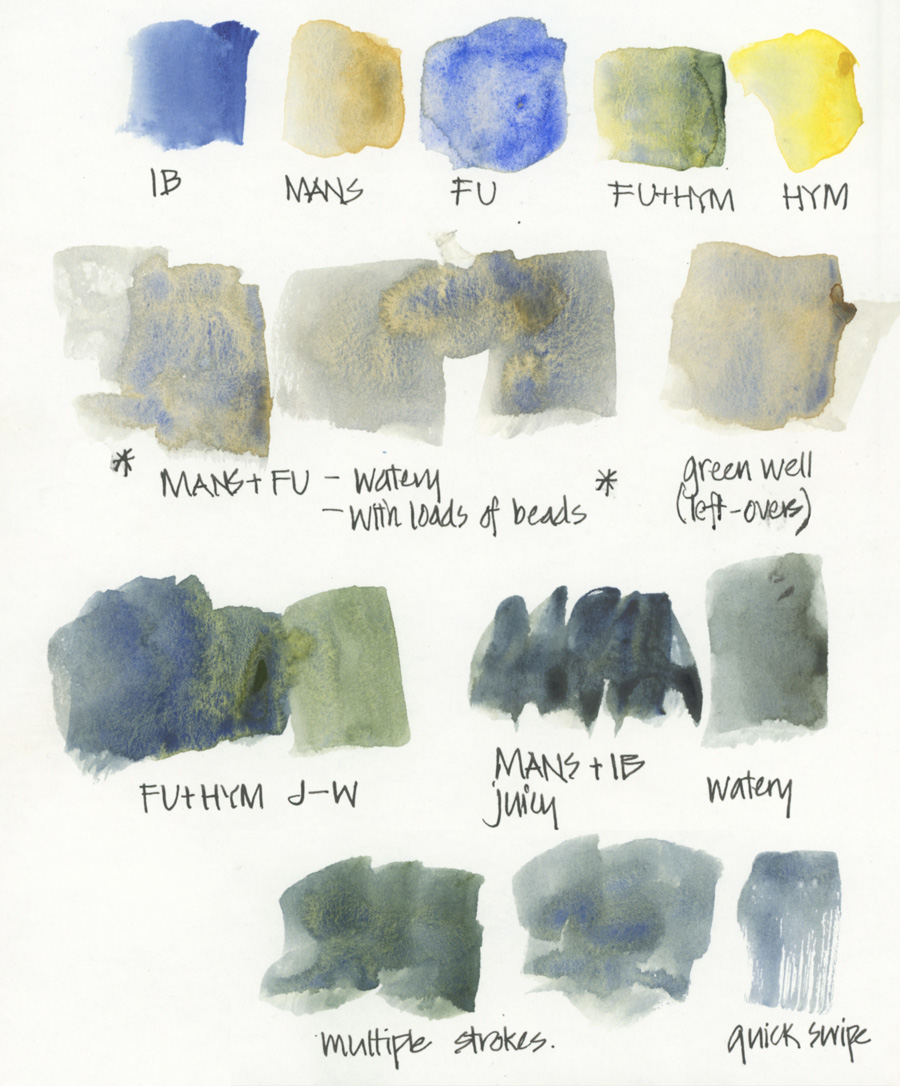
Once I was back home I thought I would do a few swatches to explain the different paints I use and how I’m always thinking about achieving pigment parties – whether I use these combos in a watery or juicy wash.
I’m also mixing up how I apply my paint – whether a quick light stroke across the page (making it look like dry brush marks) or whether I’m maximising the number of beads I’m creating by multiple strokes.
Paints used:
HYM – DS Hansa Yellow Medium PY97
FU – SCH French Ultramarine PB29
IB – DS Indanthrone Blue PB60
MANS – DS Monte Amiata Natural Sienna PBr7
Find out more about why I use these paints in this series of articles.
This diagram – a sneak peek from Lesson 1 of my Watercolour course – explains what I mean by pigment party.
And oh! BTW The Live Version of Watercolour starts today.
I’ll be working through the exercises again – and sharing new insights in the weekly live sessions. Last night I did a WJP colour chart (WJP = water, juicy, pasty) for my new Aquarius palette and realised that this is the way I should do all my colour charts in the future! I’ll share more with the group during the course in the coming week!
Find out more about the Watercolour course here.

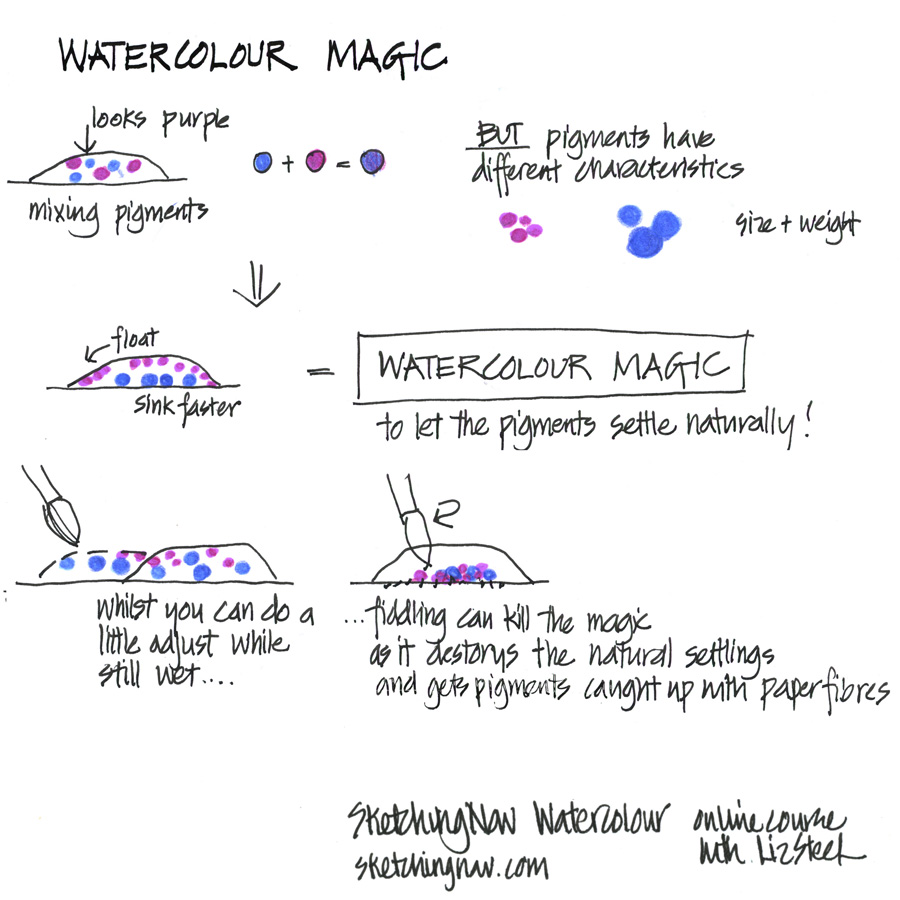
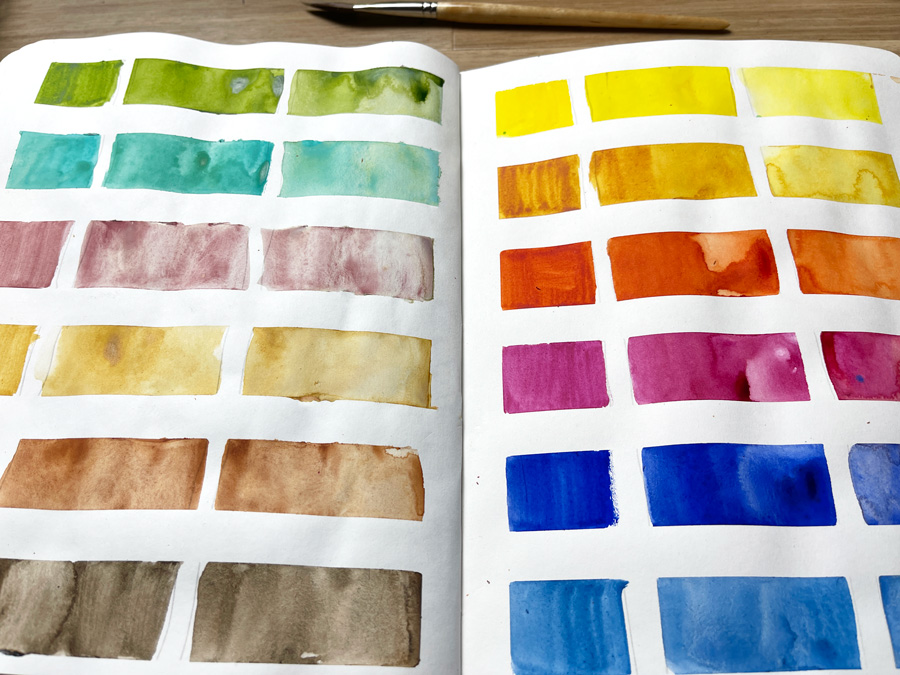





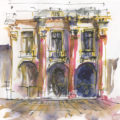
5 Comments
Hi Liz!
Really love your approach to depicting the trees! So sorry to hear the gum tree was taken down.
A little aside from some sweet memories…I still remember some of the lyrics from the Kookaburra song we sang in Girl Scouts here in the US some 60 years ago! Didn’t realize what rascals they could be!
Sounds dangerous, those birds! They look quite Devilish on that branch! I am always heart broken when trees get cut, especially such a lovely one like that twin trunk! How wonderful to have captured the history of that tree, now, though.
HI Jamie – yes, they are a real pain… I’m keeping an eye out for them now!
I have a 35 year old twin trunk Tulip Poplar trees I wish I had chosen to keep one. This makes trees weaker than a singleton. It has beautiful flowers but you have to look for them as the leaves hide them from view. It’s a lovely subject in my garden to paint. I love the sketch you did. Maybe the trunk stump will become a favorite seat for people to enjoy the park, and give it a new life.
THanks for sharing Frances – interesting to learn that it makes trees weaker. This stump is a little too high for a seat but sprouts might grow out of it.
NEWSLETTER
Subscribe for first notification of workshop + online classes and more.